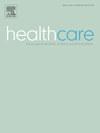通过一集石斑鱼的镜头看军队卫生系统的外科手术程序
IF 2.1
4区 医学
Q3 HEALTH POLICY & SERVICES
Healthcare-The Journal of Delivery Science and Innovation
Pub Date : 2025-05-01
DOI:10.1016/j.hjdsi.2025.100759
引用次数: 0
摘要
背景:由于公共资助的卫生系统面临越来越大的问责压力,以及对医疗就绪的军队的需求,军队卫生系统(MHS)采用了优化医疗服务提供的战略。研究表明,对护理事件的分析是一种有价值的工具,可以确定特定程序的相对资源使用情况,并可以直接提高护理服务。方法:本概念验证研究探讨了将外科病人的服务分组到护理事件中的可行性。这些护理事件作为评估公共医疗保健系统内资源使用的分析单元。借用布兰迪斯大学为医疗保险和医疗补助服务中心开发的分组工具,我们开发了将其用于MHS临床就诊和索赔数据的方法。数据包括MHS从2009-2015财年支付的所有医疗服务,包括在其设施内外提供的医疗服务。结果使用这个分析分组工具,我们将49%的行政数据分组到护理事件中。在这些事件中,我们看到MHS直接提供的护理和私营部门供应商网络提供的护理在基于特定外科手术服务区域的后遗症率方面存在差异。我们为卫生系统提供了一种评估其实践模式的新工具,可以为提高效率和减缓支出制定有价值的战略。除了传统的以人群为基础的评估效率的指标外,护理事件是确定用于产生给定手术结果的服务组合的有价值的工具。本文章由计算机程序翻译,如有差异,请以英文原文为准。
Looking at military health system surgical procedures through the lens of an episode grouper
Background
With mounting accountability pressure on their publicly funded health system and the demand for a medically ready military force, the military health system (MHS) employs a strategy to optimize care delivery. Research suggests that analysis of episodes of care is a valuable tool for identifying the relative resource use for a given procedure and can direct enhancements in care delivery.
Methods
This proof-of-concept study investigates the feasibility of grouping services for surgical patients into episodes of care. These episodes of care served as a unit of analysis for evaluating resource use within a public healthcare system. Borrowing from a grouping tool developed for the Centers for Medicare and Medicaid Services by Brandeis University, we developed methods to employ it with MHS clinical encounter and claims data. Data included all care paid for by the MHS from FY2009-2015, including care delivered inside and outside of their facilities.
Results
Using this analytic grouping tool, we grouped 49 percent of our administrative data into episodes of care. In these episodes, we see variation in both the care provided directly by the MHS and care provided by the network of private sector providers in rates of sequelae based on the service area for specific surgical procedures.
Conclusions
We offer a novel tool for health systems to evaluate their practice patterns, which can generate valuable strategies for efficiency gains and slowing spending.
Implications
Outside of the traditional population-based metrics to evaluate efficiency, episodes of care are a valuable tool for identifying the mix of services used to produce a given surgical outcome.
求助全文
通过发布文献求助,成功后即可免费获取论文全文。
去求助
来源期刊

Healthcare-The Journal of Delivery Science and Innovation
HEALTH POLICY & SERVICES-
CiteScore
4.90
自引率
0.00%
发文量
37
期刊介绍:
HealthCare: The Journal of Delivery Science and Innovation is a quarterly journal. The journal promotes cutting edge research on innovation in healthcare delivery, including improvements in systems, processes, management, and applied information technology.
The journal welcomes submissions of original research articles, case studies capturing "policy to practice" or "implementation of best practices", commentaries, and critical reviews of relevant novel programs and products. The scope of the journal includes topics directly related to delivering healthcare, such as:
● Care redesign
● Applied health IT
● Payment innovation
● Managerial innovation
● Quality improvement (QI) research
● New training and education models
● Comparative delivery innovation
 求助内容:
求助内容: 应助结果提醒方式:
应助结果提醒方式:


